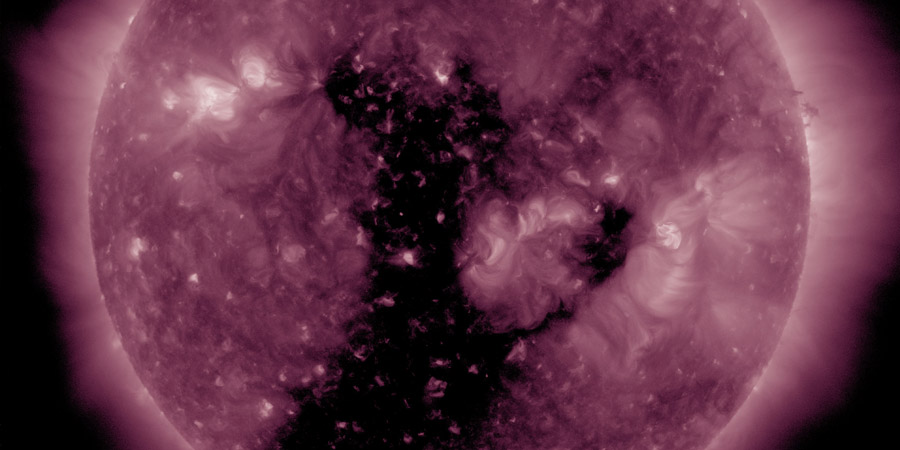Coronal hole faces Earth
Monday, 2 January 2017 14:57 UTC

Solar activity remains very low (there are no numbered sunspot regions on the earth-facing side of the solar disk today) but 2017 is off to a good start anyway. A large coronal hole is facing our planet today and sending an enhanced solar wind stream towards our planet.
Our automated coronal hole detection system detected the gaping hole in the solar corona and published a tweet on our Twitter channel @_SpaceWeather_
A coronal hole is facing Earth. Enhanced solar wind could arrive in ~3 days - Follow live on https://t.co/T1Jkf6i4Cb pic.twitter.com/r1hgVaG23A
— SpaceWeatherLive (@_SpaceWeather_) 2 januari 2017
It is indeed the northern extension of the southern hemisphere polar coronal hole that survived its trip around the far side of the Sun to send some more high speed solar wind towards our planet. While its shape changed a bit compared to the last time it faced our planet, it remains a massive coronal hole that stretches all the way to the solar equator. Solar wind speeds of about 700km/s (as recorded by STEREO Ahead) are to be expected. The solar wind stream could arrive in about two days from now (4 January 2017) and minor G1 geomagnetic storm conditions are possible when the solar wind stream arrives.
Thank you for reading this article! Did you have any trouble with the technical terms used in this article? Our help section is the place to be where you can find in-depth articles, a FAQ and a list with common abbreviations. Still puzzled? Just post on our forum where we will help you the best we can!
Latest news
Latest forum messages
Support SpaceWeatherLive.com!
A lot of people come to SpaceWeatherLive to follow the Sun's activity or if there is aurora to be seen, but with more traffic comes higher server costs. Consider a donation if you enjoy SpaceWeatherLive so we can keep the website online!

Space weather facts
| Last X-flare | 2024/03/28 | X1.1 |
| Last M-flare | 2024/04/19 | M2.1 |
| Last geomagnetic storm | 2024/04/16 | Kp5 (G1) |
| Spotless days | |
|---|---|
| Last spotless day | 2022/06/08 |
| Monthly mean Sunspot Number | |
|---|---|
| March 2024 | 104.9 -19.8 |


